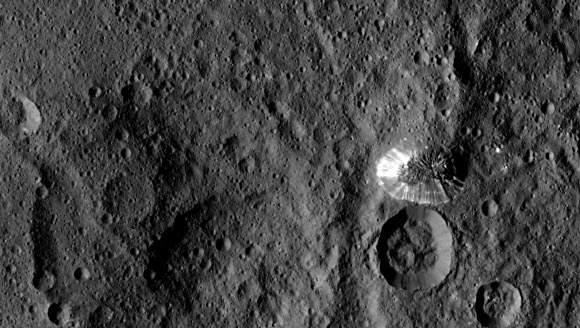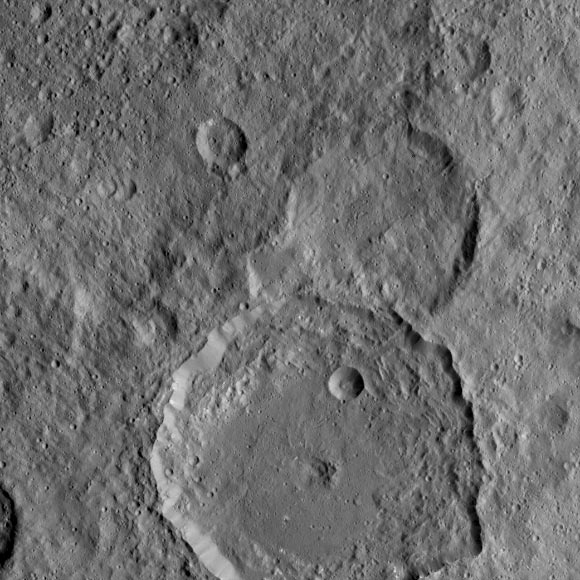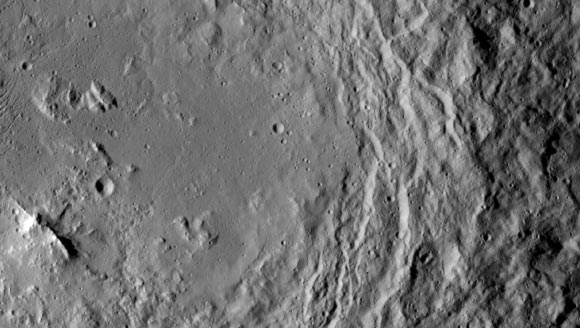New close-up pics of Ceres show the dwarf planet’s features in detail, including tall, conical mountain; narrow, braided fractures and a large crater called Gaue.

Dawn spotted this conical mountain on Ceres from a distance of 915 miles (1,470 km). The image was taken on August 19, 2015. The mountain, located in the southern hemisphere, stands 4 miles (6 km) high. Its perimeter is sharply defined, with almost no accumulated debris at the base of the brightly streaked slope. Image credit: NASA / JPL-Caltech / UCLA / MPS / DLR / IDA.
Dawn took the new images when it was flying about 915 miles (1,470 km) from the surface of Ceres – the largest object in the main asteroid belt – on August 18-19.
“Dawn is performing flawlessly in this new orbit as it conducts its ambitious exploration,” said Dr Marc Rayman of NASA’s Jet Propulsion Laboratory in Pasadena, Dawn’s chief engineer and mission director.
“The spacecraft’s view is now three times as sharp as in its previous mapping orbit, revealing exciting new details of this intriguing dwarf planet.”

This image of Gaue crater, the large crater on the bottom, was taken on August 18, 2015. The center of this crater is sunken in. Its diameter is 52 miles (84 km). Image credit: NASA / JPL-Caltech / UCLA / MPS / DLR / IDA.
At its current orbital altitude, Dawn takes 11 days to capture and return images of Ceres’ whole surface.
Each 11-day cycle consists of 14 orbits. Over the next two months, the probe will map the entirety of the dwarf planet six times.
Dawn is using its framing camera to extensively map the surface, enabling three-dimensional modeling.

This image shows a mountain ridge, near lower left, that lies in the center of Urvara crater. The crater’s diameter is 101 miles (163 km). The image was snapped on August 19, 2015. Image credit: NASA / JPL-Caltech / UCLA / MPS / DLR / IDA.
At the same time, its mapping spectrometer is collecting data that will give planetary researchers a better understanding of the minerals found on Ceres’ surface.
In October, the spacecraft will begin spiraling toward its final orbit, which will be at an altitude of 230 miles (375 km).







